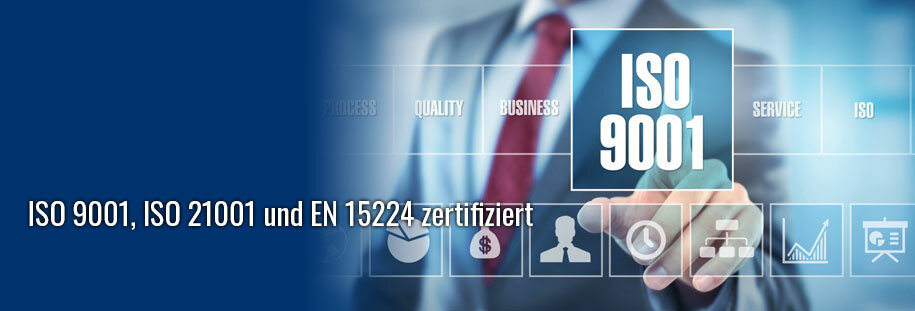 Akademie-ZWM®
Akademie-ZWM®Wundmanagement
Bücher, ebooks, Poster ...

Wund-Literatur
Konsensusdokument lokaler Antiseptik 2004
Kramer A, Heeg P, Harke HP, Rudolph H, Koch S, Jülich WD, Hingst V, Merka V, Lip-pert H: Wundantiseptik 1993. In: Klinische Antiseptik: p 163-191.
Kramer A, Wendt M, Werner HP: Möglichkeiten und Perspektiven der klinischen Antisep-tik. mhp Wiesbaden, 1995.
Baharestani M: The clinical relevance of debri-dement In: Baharestani M, Goltrup F, Holstein P, Vanscheidt W (eds) The clinical relevance of debridement. Springer, Berlin Heidelberg, 1999.
Dräger E, Winter H: Surgical debridement versus enzymatic debridement. In: Baharestani M, Goltrup F, Holstein P, Vansceidt W (eds) The clinical relevance of debridement. Springer, Berlin Heidelberg, 1999.
Kramer A, Bergemann R, Brück J, Kammerlander G, Metelmann HR, Roth B, Rudolph P (1999): Indikationen und Auswahlkriterien für lokale Wundantiinfektiva und Wundauflagen im Rahmen der chirurgischen Wundbehandlung. Loseblattsammlung Hygiene in Krankenhaus und Praxis ,1999; 1-20.5, eco-med Landsberg, p 1-16.
Görtz G, Reimer K, Neef H: Entwicklung, Eigenschaften und Bedeutung von PVP-Iod. In: Topische Infektionstherapie und Prophylaxe, 1996: 3-7.
Mlangeni D, Daschner F: Povidine-iodine: Evaluation of povidone-iodine as an antiseptic. Antiinfective Drugs Chemother 1995; 13, 3:161-167.
Michel D, Zäch GA, von Arx P, Geng V: Wachstumshemmende Wirksamkeit von Anti-septika im Suspensionstest in vitro auf Methicil-lin-resistente Staphylococcus aureus-Stämme (MRSA), Pseudomonas aeruginosa und Escheri-chia coli. In: Topische Infektionstherapie und Prophylaxe 1996:9-12.
Kramer A, Behrens-Baumann W: Prophylac-tic use of topical anti-infectives in ophthalmolo-gy. Ophthalmologica 1997; 211, Supp 1:68-76
Kramer A: Antiseptika und Händedesinfektionsmittel. In: Körting HC, Sterry W (Hrsg) Therapeutische Verfahren in der Dermatologie Blackwell Wissenschaft Berlin 2001; 273-294.
Gershenfeld L: Povidone-iodine as a sporicide. Am JPharm 1962; 134: 78-81.
Esanu V, Profeta A: Antiviral Antiseptics. In: Kramer A, Krasilnikow AP, Weuffen W, Berenc-si G, Gröschel D, Kemter BP (Hrsg) Handbuch der Antiseptik, Bd. II/3, Antibakterielle, anti-fungielle und antivirale Antiseptik - ausgewählte Wirkstoffe (Hrsg. Kramer A, Weuffen W, Krasilnikow AP, Gröschel D, Bulka E, Rehn D), Fischer, Stuttgart, New York 1987 ; 98-122-
Wutzier P, Sauerbrei A, Klöcking R, Sträube E, Schacke M, Thust R, Fleischer W, Reimer K: Virucidal and chlamydicidal activities of povidone-iodine liposome complex. Ophthal-micRes2000; 32: 118-125.
Kramer A, Rudolph P, Pitten FA, Behrens-Baumann W, Reimer K, Glück U: Antiseptika im Kampf mit den Keimen. Pharm Ztg 2000; 145, 2:11-19.
Werner HP: Die mikrobizide Wirksamkeit ausgewählter Antiseptika. HygMed 1992; 17, 2:51-59.
Pitten FA, Werner HP, Kramer A: A standar-dized test to assess the impact of different orga-nic challenges on the antimicrobial activity of antiseptics. J Hosp Inf, im Druck
Hierholzer G, Görtz G: PVP-Jod in der operativen Medizin. Grundlagen, klinische Anwendung und Ergebnisse. In: PVP-Jod in der operativen Medizin 1984: S.280.
Müller G, Kramer A (2003): In vitro action of cornbinations of selected antimicrobial agents and adult bovine articular cartilage (sesamoid bone). Chem-Biol Interactions 2003; 45: 331-336.
König B, König W, Reimer K: Jod - die Stellung eines alten Desinfektionsmittels in der modernen Infektiologie. Dtsch Med Wochenschr 1997; 122, 5:141.
Kramer A, Adrian V, Adam C: Vergleich der Toxizität von Lavasept und ausgewählten Antiseptika. Hyg Med 1993; 18, 1:9-16.
Kramer A, Adrian V: Antiseptika als Alternative zu systemischen Antiinfektiva mit Ergebnissen zur Gewebeverträglichkeit im Explantationstest als einem weiterentwickelten In-vitro-Prüfmodell. In: Hierholzer G, Reimer K, Weissenbacher ER (Hrsg) Topische Infektionstherapie und Prophylaxe, Thieme, Stuttgart - New York 1996, 19-23.
Kramer A, Adrian V, Rudolph P, Kühl H:
In-Vitro-Prüfung der Verträglichkeit ausgewählter antiseptischer Wirkstoffe bzw. Präparate. In: Kramer A, Wendt M, Werner HP (Hrsg) Möglichkeiten und Perspektiven der Klinischen Antiseptik. mhp-Verlag, Wiesbaden 1995: 41-48.
Kramer A, Adrian V, Rudolph P, Wurster S, Lippert H: Explantationstest mit Haut und Peritoneum der neonatalen Ratte als Voraussagetest zur Verträglichkeit lokaler Antiinfektiva für Wunden und Körperhöhlen. Chirurg 1998; 69, 8:840-845.
Neef H, Meyer M, Fischbeck O: Erfahrungen in der therapeutischen und prophylaktischen Anwendung von PVP-Iod im Thoraxbereich. In: Topische Infektionstherapie und Prophylaxe 1996: 51-56.
Stobernack A, Achatzy R: Behandlungskonzepte zur Infektionsvermeidung und Therapie infektiöser Komplikationen in der Thorax- und Gefäßchirurgie. In: Topische Infektionstherapie und Prophylaxe 1996: 57-59.
European Tissue Repair Society: lodine revi-sited. ETRS Bull 1997; 4(1): 2-5.
Görtz G: PVP-Iod zur Prophylaxe und Therapie von Infektionen in der Allgemein- und Viszeral-chirurgie. In: Topische Infektionstherapie und Prophylaxe 1996: 61-68.
Ganzer D, Völker L, Follak N, Wolf E, Granow H: Reaktion des hyalinen Gelenkknorpels und der Synovialis auf eine intraartikuläre Installation von verschiedenen Antiinfektiva. Arthroskopie 2001; 14: 31-44.
Kramer A, Below H, Behrens-Baumann W, Müller G, Rudolph P, Reimer K: New aspects of the tolerance of the antiseptic povidone-iodine in differnet ex vivo modeis. Dermatology 2002; 204, supp 1:86-91.
Reimer K, Vogt PM, Brögmann B, Hauser J, Roßbach O, Kramer A, Rudoph P, Bosse B, Schreier H, Fleischer W: An innovative topical drug formulation for wound healing and infec-tion treatment: in vitro and in vivo investiga-tions of a povidone iodine liposome hydrogel. Dermatology 2000; 201: 235-241.
Brück JC, Koch S, Kramer A: Klinische und histologische Untersuchungen zur Wirksamkeit von Lavasept auf granulierenden bzw. epitheli-sierenden Wunden. Hyg Med Suppl. 2000; 1: 46.
Harke HP, Streek M: Octenidin - ein neuer antimikrobieller Wirkstoff. Hyg Med 1989; 14: 372-374.
Schülke fr Mayr GmbH: Adjuvante und unterstützende Wundversorgung mit Octeni-septR. Firmenschrift 1086/1/5.0/5/97/vDuN.
Falanga V: Classifications for wound bed pre-paration and Stimulation of chronic wounds. Wound Repair Regen 2000; 8: 347-350.
Skripitz R, Werner HP: Bakterizide Langzeitwirkung ausgewählter Antiseptika. Hyg Med 1994; 19,4: 199-204.
Ikeda T, Tazuki S, Watanabe M: Interaction of biologically active molecules with phospholi-pid membranes. 1. Fluorescence depolarization studies on the effect of polymeric biocide bea-ring biguanide groups in the main chain. Bio-chem Biophys Acta 1983; 735: 380-386.
Kallenberger A, Kallenberger C, Willenegger H: Experimentelle Untersuchungen zur Gewebeverträglichkeit von Antiseptika. Hyg Med 1991; 16, 10:383-395.
Kramer A, Glück U, Heeg P, Werner HP: Antiseptik. In: Krankenhaus- und Praxishygiene 2001: 252-268.
Sellmer W: Lokaltherapeutika, speziell Antiseptika, in der Behandlung chronischer Wunden - eine aktuelle Bewertung. Med Praxis 2001; 2: 20-30.
Roth B, Müller J, Willenegger H: Intraoperative Wundspülung mit einem neuartigen lokalen Antiseptikum. Helv Chir Acta 1985; 52: 61-65.
Willenegger H: Lokale Antiseptika in der Chirurgie - eine Wiedergeburt? Unfallchir 1995; 20: 94-110.
Willenegger H: Klinische Erfahrungen mit einem neuen Antiinfektivum. Arbeitstagungen Liesetal 1992 und 1993. Hyg Med 1994; 19, 4: 227-233.
Kramer A, Willenegger H: Editorial. Perioperative Antibiotikaprophylaxe - dominierende Möglichkeit zu Infektionsprophylaxe bei chirurgischen Eingriffen? Hyg Med 1994; 19, 4: 180-182.
Schmit-Neuerburg KP, Bettag Ch, Schlicke-wei W, Fabry W, Hanke J, Renzing-Köhler K, Hirche H, Kock H-J: Wirksamkeit eines neuartigen Antisepticum in der Behandlung kontaminierter Weichteilwunden. Chirurg 2001; 72: 61-71.
Berg A: Einfluss der peritonealen Spülung mit dem Antiinfektivum Polihexanid/Lavasept, auf die experimentell induzierte Peritonitis beim Meerschweinchen. Diss Med Fak Univ Greifswald 2000.
Furr JR, Rüssel AD, Turner TD, Adrews A: Antibacterial activity of Actisorb Plus, Actisorb and SILVER nitrate. J Hosp Infect 1994; 27: 201-208.
Rudolph P, Werner HP, Kramer A: Untersuchungen zur Mikrobizidie von Wundauflagen Hyg Med 2000; 25: 184-186.
Müller G, Winkler Y, Kramer A: Antibacterial activity and endotoxin-binding capacity of ActisorbR Silver 220. J Hosp Inf 2003; 53: 211-214.
Lippert H (Hrsg), Kramer A, Piatek S, Schulz HU, Tautenhahn J (Mitarb): Wundatlas: Wunde, Wundbehandlung und Wundheilung. Barth, Heidelberg 2001.
Gallenkemper G: Biochirurgie in der Behandlung von Problemwunden Teil 1 und 2. ZfW 1999; Nr. 10/2 6-10 und 38-40
Fleischmann W, Russ M, Moch D, Mar-quardt C: Biochirurgie - Sind Fliegenmaden wirklich die bessere Chirurgie. Chirurg 1999; 70:1340-1346.
Hingst V, Vergetis W: Antiseptische Sanierung von Staphylococcus aureus-Keimträgern in der Nase. In: Kramer A, Gröschel D, Heeg P, Hingst V, Lippert H, Rotter M, Weuffen W (Hrsg) Klinische Antiseptik. Springer, Berlin Heidelberg New York 1993, 233-245.
Kimura M, Kawada A: Contact sensitivity-induced by neomycin with cross-sensitivity to other aminoglycoside antibiotics. Contact Der-matitis 1998; 39: 148-15015.
Lyon BR, Skurray R: Antimicrobial resistance of staphylococcus aureus: genetic basis. Micro-biolRev 1987; 51, 1:88-134.
Zastrow KD, Kramer A: Recommendations for Isolation and Antiseptic Sanitation of Patients with MRSA Colonisation or Infection. In: Kramer A, Behrens-Baumann W (eds): Antiseptic Prophylaxis and Therapy of Ocular Infec-tions Karger, Basel 2001, 250-262.
Hoekstra MJ, Hupkens P, Dutrieux RP, Bosch MM, Brans TA, Kreis RW: A compara-tive burn wound model in the New Yorkshire pig for the histopathological evaluation of local therapeutic regimens: silver sulfadiazine cream as a Standard. Br J Plast Surg 1993; 46, 7:585-589.
Zapata-Sirvent RL, Hansbrough JF: Cytoto-xicity to human leukocytes by topical antimicrobial agents used for burn care. J Burn Care Rehabill993; 14: 132-140.
McCauley RL, Li YY, Chopra V, Herndon DN, Robson MC: Cytoprotection of human dermal fibroblasts against silver sulfadiazine using recombinant growth factors. J Surg 1994; 56: 378-384.
Görtz G: PVP-Iod zur Prophylaxe und Therapie von Infektionen in der Allgemein- und Viszeral-chirurgie. In: Hierholzer G, Reimer K, Weissen-bacher ER (Hrsg) Topische Infektionstherapie und Prophylaxe. Thieme, Stuttgart New York 1996, 61-68.
Kramer A: Replik zum Artikel "Aktuelles Präparatespektrum und Anwendungsempfehlungen für die Wundantiseptik" im Hygiene Monitor 8/99. Hygiene Monitor Jahrgang 1999; 5: 12/99.
Grassberger M: Wundbehandlung mit Fliegenlarven Teil 1 und Teil 2. Hygiene Monitor Jahrgang 8: 11/2002 und 12/2002.
Behrens-Baumann W, Kramer A: Pre-, Intra-and Postoperative Antisepsis in Eye Surgery. In: Kramer A, Behrens-Baumann W (eds) Antiseptic Prophylaxis and Therapy in Ocular Infec-tions. Karger, Basel 2002, 212-222.
www.octenisept.Schuelke-Mayr.de
Werner HP, Kramer A: Mikrobiologische Anforderungen an lokale Antiinfektiva unter spezieller Berücksichtigung der äntiinfektiven Wundbehandlung. In: Kramer A, Wendt M, Werner HP (Hrsg) Möglichkeiten und Perspektiven der klinischen Antiseptik. mhp, Wiesbaden 1995,26-30.
Kramer A, Rudolph P: Efficacy and Tolerance of Selected Antiseptic Substances in Respect of Suitability for Use on the Eye. In: Kramer A, Behrens-Baumann W (eds) Antiseptic Prophylaxis and Therapy in Ocular Infections. Karger, Basel 2002, 117-144.
Harke HP: Moderne Schleimhautantiseptika -Octenidindihydrochlorid. Vorgestellt auf dem 2. Ulmer Hygiene-Symposium 1997.
Tompkins RG, Burke JF: Infections of Burn Wounds. In: Bennet JV, Brachman PS (eds) Hospital Infections. 3th ed, Little Bronm Boston 1992:711-730.
Brück JC, Koch S, Kramer A: Klinische Untersuchungen zur Wirksamkeit von Lavasept auf granulierendem bzw. epithelisierenden Wunden. Hyg Med 1998; 23, supp 2:46.
Maitre S, Jaber K, Perrot JL, Guy C, Cam-bazard F: Increased serum and urinary levels of silver during treatment with topical silver sulfa-diazin. Ann Dermatol Venerol 2002; 129:217-219.
Hara J, Yasuda F, Higashitsutsumi M: Preo-perative disinfection of the conjunctival sac in cataract surgery. Ophthalmologica 1997; 211 (suppll):62-67.
Binder C, de Kaspar HM, Engelbert M, Klaus V, Kampik A: Bakterielle Keimbesiede-lung der Konjunktiva mit Propionibacterium acnes vor und nach Polyvidon-Jod-Applikation vor intraokularen Eingriffen. Ophthalmologe 1989; 95:438-441.
Binder C, de Kaspar HM, Klaus V, Kampik A: Präoperative Infektionsprophylaxe mit 1 %iger Polyvidon-Jod-Lösung am Beispiel von konjunktivalen Staphylokokken. Ophthalmologe 1999; 96:66663-557.
German-Austrian recommendation for post-exposure prophylaxis of HIV infection: AWMF-online Leitlinie 1999. www.AWMF/II/aids004e.htm
Görtz G: Intraoperative Spülung mit antiseptischen Lösungen. In: Infektionsverhütung in der Chirurgie 1991:291-303.
Bedrosian I, Sofia RD, Wolff SM, Dinarello CA: Taurolidine, an analogue of the amino acid taurine, suppresses interleukin 1 and tumor necrosis factor synthesis in human peripheral blood mononuclear cells. Cytokine 1991; 3: 568-57.
Billing A, Fröhlich D, Ruckdeschel G: Der Einfluss von Taurolin auf die körpereigene Abwehr und die Keimelimination bei der menschlichen Peritonitis. Langenbecks Arch Chir 1992; 377: 180-185.
Reding R, Pfirrman RW: Taurolidine perito-neal lavage as prophylaxis against infection after elective colorectal surgery [letter; comment]. Br J Surg 1995; 82: 569.
Rosman C, Westerveid GJ, van Oeveren W, Kooi K, Bleichrodt RP: Effect of intraperito-neal antimicrobials on the concentration of bac-teria, endotoxin, and tumor necrosis factor in abdominal fluid and plasma in rats. Eur Surg Res 1996; 28: 351-360.
Traub WH, Leonhard B, Bauer D: Taurolidine: in vitro activity against multiple-antibiotic-resistant, nosocomially significant clinical isola-tes of Staphylococcus aureus, Enterococcus fae-cium, and diverse Enterobacteriaceae. Chemot-her 1993; 39: 322-330.
Willatts SM, Radford S, Leitermann M: Effect of the antiendotoxic agent, taurolidine, in the treatment of sepsis syndrome: a placebo-controlled, double-blind trial. Crit Care Med 1995; 23: 1033-1039.
Mumcuoglu K, Ingber A, Gilead L, Stess-man J, Friedman R, Schulman H, Bichu-cher H: Maggot therapy for the treatment of intractable wounds. Int J Dermatol 1999; 38:623-627.
Wollina U, Liebold K, Schmidt WD, Hartmann M, Fassler D: Biosurgery supports gra-nulation and debridement in chronic wounds -clinical data and remittance spectroscopy mea-surement. Int J Dermatol 2002; 41:635-639.
Sherman RA: Maggot versus conservative debridement therapy for the treatment of pres-sure ulcers Wound Rep Regen 2002; 10:208-214.
Sherman RA: Maggot therapy for treating dia-betic foot ulcers unrsponsive to conventional therapy. Diab Care 2003; 26: 446-451.
Sherman RA, Wyle F, Vulpe M: Maggot therapy for treating presssure ulcers in spinal cord injury patients. J Spinal Cord Med 1995; 18:71-74.
Courtenay M, Vhurch JCT, Ryan TJ: Larva therapy in wound management. J Royal Soc Med 2000; 93: 72-74.
Wayman J, Nirojogi V, Walker A, Sowinski A, Walker MA: The cost effectiveness of larval therapy in venous ulcers. J Tiss Viabil 2000: 10: 91.
Daeschlein G, Below H, Hoffmeister B, Jünger M, Kramer A: Antibakterielle Effekte von Fliegenmaden (Lucilia sericata) in vitro zur Wundbehandlung ZfW Sonderband 2003; 24-25.
Weuffen W, Kramer A, Paetzelt H, Lüdde KH: Biologische Bedeutung von Thiocyanat und Schlussfolgerungen für die lokale Infektabwehr. In: Weuffen W, Berencsi G, Gröschel D, Kemter BP, Kramer A, Krasilnikow AP, Handbuch der Antiseptik. 1984; Bd 1/4, S 218-257.
Thomas S, Ancdrews AM, Hay NP, Bourgoise S: The anti-microbial activity of maggot secretions: results of a preliminary study. J tiss viabil 1999: 9: 127-135.
Pavillard ER, Wright EA: An antibiotic from maggots. Nature 1957; 2: 916-917.
Dissemond J, Koppermann M, Esser S, Schultewolter T, Goos M, Wagner SN: Therapie eines Methicillin-resistenten Spaphylo-kokkus aureus (MRSA) im Rahmen der Behandlung eines chronischen Ulkus mittels Biochirurgie. Hautarzt 2002; 53: 608-612.
Bonn D: Maggot therapy: an alternative of wound infection. Lancet 2000; 356: 1174.
Prete PE: Growth effects of phaenicia sericata larval extracts on fibroblasts: mechanism for wound healing by maggot therapy. Life Sei 1997; 60: 505-51097.
TaurolinR: Taurolidin. Chirurgische Spüllösung für die Lokaltherapie von intraabdominellen Infektionen (1988) Thomae (erhältlich beim BP1)
Goodman and Gilmans: The Pharmacological Basis of Therapeutics. 6th Ed, MacMillan, New York 1980;, 977.
Kramer A: Acriflavinumchlorid, Ethacridinlac-tat.Tosylchloramidnatrium. In: Bruchhausen v.F, Ebel S, Frahm AW, Holzgrube U, Dannhardt G (Hrsg) Hagers Handbuch der Pharmazeutischen Praxis, Stoffe, Springer, Berlin 1993, Bd 7, 65, 1105.
www.cdc.gov/niosh/rtecs/ od481908.html#Q
Menke H, Pelzer Mi Raff T, Siebert J, Germann G: Bin neues lokales Antiseptikum zur Oberflächenbehandlung bei Schwerstver-brannten. Akt Traumatol 2001;31: 211-215.
Kramer A, Mersch-Sundermann V, Gerdes H, Pitten FA, Tronnier H: Toxikologische Bewertung für die Händedesinfektion relevanter antimikrobieller Wirkstoffe. In: Kampf G (Hrgs.): Hände-Hygiene im Gesundheitswesen. 1. ed. Springer, Berlin, Heidelberg 2003: 105-174.#
Müller G, Kramer A: Effect of selected wound antiseptics on adult articular cartilage (bovine sesamoid bone) in the presence of Escherichia coli and Staphylococcus aureus. J Orthop Res (im Druck).
Effenberger T: Ch!oramin-T-Lösung zur intraoperativen Peritoneallavage. Eine statistische Analyse. Zentralbl Chir 1988; 113: 959-67.
Kramer A, Weber U: Prüfbericht A 04048 ChloraminT-LysoiormR-Wundantiseptikum. Hygiene Nord Greifswald, 24.03.2004.
Nagl M, Nguyen VA, Gottardi W, Ulmer H, Hopfl R: Tolerability and efficaey of N-chloro-taurine in comparison with chloramine T for the treatment of chronic leg ulcers with a purulent coating: a randomized phase II study. Br JDermatol2003; 149: 590-597.
Gottardi W: Wäßrige Chloramin T Lösungen als Desinfektionsmittel: Chemische Zusammensetzung, Reaktivität und Toxizität. ArchPharm 1992;325: 377-84.-+






